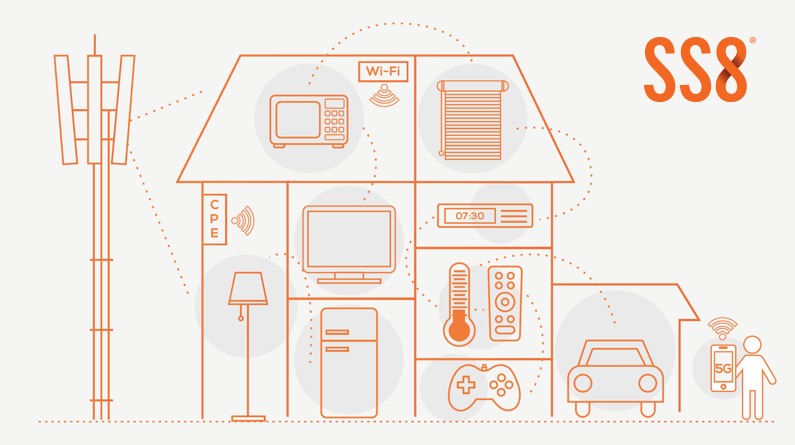As telecom operators plan their rollout of the fifth generation (5G) of network services, two distinct services have emerged, mobile and fixed wireless access (or FWA). These services are being launched on separate timelines and are aimed at different target customers. In this blog post, we will discuss fixed wireless access and its impact on lawful intercept operations.
5G mobile services are very similar to the 4G mobile services that we use today – portable devices that connect to cellular networks through which we make phone calls and/or access the Internet. Today, our devices (smartphones, tablets, etc.) have radio interfaces that connect to fourth generation (4G) networks; as 5G is rolled out, subscribers will have the option to replace their 4G devices with 5G ones.
In SS8’s webinar, we made the argument that the migration from 2G to 3G to 4G was evolutionary while 5G is revolutionary. Under the hood, 5G will offer more than ten times the speed of 5G, more devices per geographic area and one-tenth the latency. With these characteristics, 5G will usher into the mainstream many of the technological advances we’ve only been reading about and ones that no one has even thought of.
Today, most homes and businesses make calls, access the Internet and watch television using fiber to the home or business (referred to as, FTTx). These subscribers purchase these services through traditional operators (cable and telephone companies). Due to the costs of building the fiber optic infrastructure, many of the players have frozen expansion plans and are limiting their service to existing territories. Instead, many of these operators are looking to the speed, capacity and performance of 5G to deliver these same services to homes and businesses. This is referred to as 5G-to-the-home (or 5GTTH) and more commonly as FWA (fixed wireless access).
For mobile telecom operators with 5G service can add television, voice and Internet to their mobile service (resulting in a quad play). 5G FWA will blur the line between fixed and mobile operators.
For law enforcement, FWA will have large changes in what investigators will be receiving. Not only will there be a very large increase in traffic, but investigators will see more smart appliances, smart devices, AV/VR services, streaming services (such as Netflix), home security cameras and other IOT devices. Many of these devices will not only be extremely “chatty” but are inherently vulnerable to compromise in committing crimes and as a launch point for cyber intrusions and/or denial of service attacks. Overall, 5G FWA will result in a lot more background noise for investigators to sort through as well as more services that contain valuable information.
S8’s Xcipio mediation provides wireless network and broadband operators the most comprehensive, efficient, and technologically advanced solution for the demands of 5G networks. SS8’s Intellego provides law enforcement with comprehensive voice and data reconstruction and playback combined with leaving visualization and analysis tools.
Download our free white paper to understand the full power of SS8 and how Xcipio is Leading Scale for 5G Networks.
About SS8 Networks
SS8 provides Lawful Intelligence platforms. They work closely with leading intelligence agencies, communication providers, law enforcement agencies and standards bodies and their technology incorporates the methodologies discussed in this blog. Xcipio® is already proven to meet the very high demands of 5G and provides the ability to transcode (convert) between lawful intercept handover versions and standard families. Intellego® XT natively supports ETSI, 3GPP and CALEA handovers, as well as national variants. Intellego XT’s MetaHub component is a best-in-class data analytics tool. Both product portfolios are used worldwide for the capture, analysis and delivery of data for the purposes of criminal investigations.



